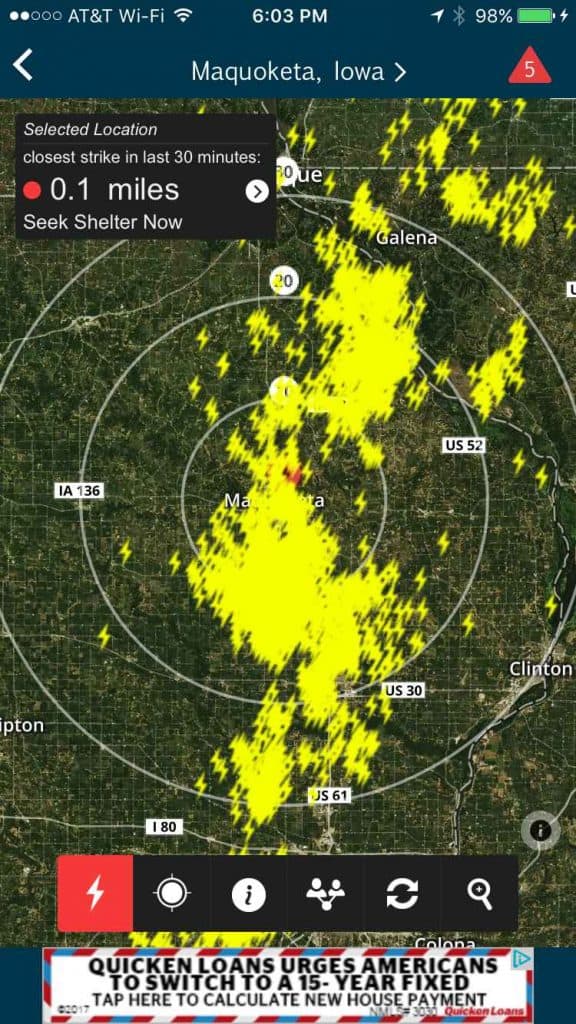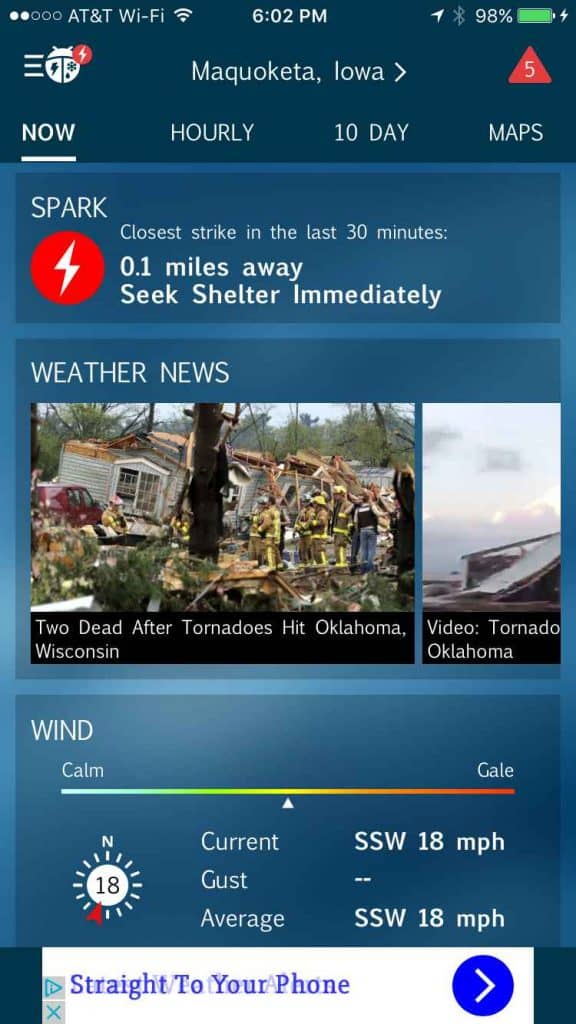Atmospheric Disasters to Watch Out For
We here at WeatherBug don’t just keep track of daily statistics in atmospheric pressure. Your security in the face of nature’s uncertain, moody mercy is our top priority.
Which is why we’ve also compiled a list of some hazards that you should be especially wary of.
[toc]HURRICANES
The only weather conditions so disastrous that humans had to decide to name them, hurricanes are massive tropical storms which deliver drastic winds with speeds of at least 74 mph. Hurricanes are vast, and can easily spread around an area of 16 km. They can be responsible for a deposit of anywhere between six inches to a foot of rainfall. Many of the most devastating hurricanes can dispossess hundreds of thousands.

Even the mildest hurricane, Floyd, caused a billion dollars in damage to public property and felled millions of trees. Its household name – and those of many other domestically-christened killers – is based on systems of naming that are divided on the basis of equatorial regions of effect where hurricanes are usually in incidence. Names are decided from a pre-set list, and the first of the season in the US is, usually, given a name with an ‘A’.
The Atlantic Hurricane Season denotes the time period per year that hurricanes are likely to form in the north Atlantic. Though the time period this term represented has changed over the years, it now stretches from June 1 to November 30, with a peak time from late August and through September.
WeatherBug’s Hurricane Center allows you to access the latest hurricane forecasts. It utilizes satellite and radar inputs based on our Doppler radar system to give you and yours the best safety recommendations in the wake of one of the most destructive phenomena known to humankind. It works best when alerts for severe developments.
TORNADOS
Similar to hurricanes only by virtue of being weather-based atmospheric phenomena that mobilize high-velocity wind-flows, tornados are much smaller, much more intense for their area of effect and very unpredictable. Media discussions around the most frequently-hit areas in the US (and sometimes Canada) have given us the term ‘Tornado Alley‘, which largely corresponds to meteorological studies as well, though it is often variable: at time it leaves Canadian areas entirely out of its defined zone of coverage. For the US, it covers most of the are from the East Coast to states falling in the CT, making this a tangible scare for many of the people living in nearly half the area of the entire country.

WeatherBug utilizes the world’s largest professional weather network, and, with its 18 animated maps operating at various levels, gives you a fighting chance to battle the force of nature’s wrath. Align these with alert notifications that you can set up on the weather app, with the fact that our service provides details of current weather conditions with utmost precision, and you can beat the twister with ease.
LIGHTNING
Close to two hundred thousand people are killed by lightning annually. With cloud-to-ground lightning very common (at a 100 strikes-per-second incidence rate on the Earth at any given moment), these whiplashes of Mother Nature’s retribution can be difficult to escape. In addition to their heat, they are essentially caused by electrostatics, and can thus lead to a gruesome death as every atom in the victim’s body has its protons and electrons split into opposite directions. For all that, though, it is responsible only for 3-5% of deaths caused by lightning. Other causes can result from side-flashes from a lightning-affected object, surface arcs radiating from such an object, or even a spike in ground current.
Lightning can even strike 40 km away from a storm-front. The old adage about lightning is also entirely wrong, as lightning, which is essentially electricity (however instantaneous) is more than likely to strike the same place twice due to reduced resistance along previous paths cleaved by it.
In the light of all this, how do you keep safe from lightning?
For one, remain indoors, as the charged atmosphere makes it unsafe for you to be outside where you might connect differing voltages. And take care to disconnect all electrical appliances if the storm is particularly severe. If you are caught outside though, take care to neither take shelter next to a tall object that might attract and then splash or radiate lightning, nor to park under one.
Make sure to make good use of WeatherBug’s lightning-mapping service, Spark, which gives you lightning data in real-time, based on NWS and NOAA inputs, and recommends additional safety measures based on your situation. You can also get Spark alerts for a number of saved locations to help your loved ones stay safe.
All that sounds pretty frightening doesn’t it?
And you can prevent all of that with a simple download.



